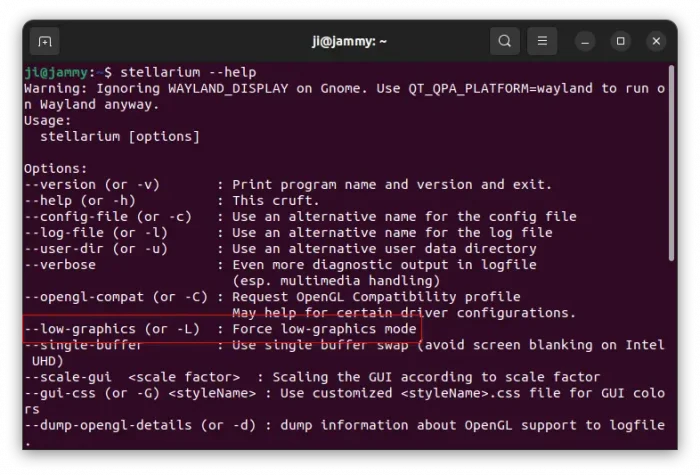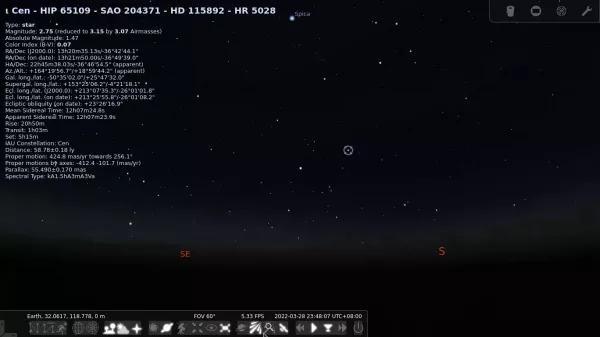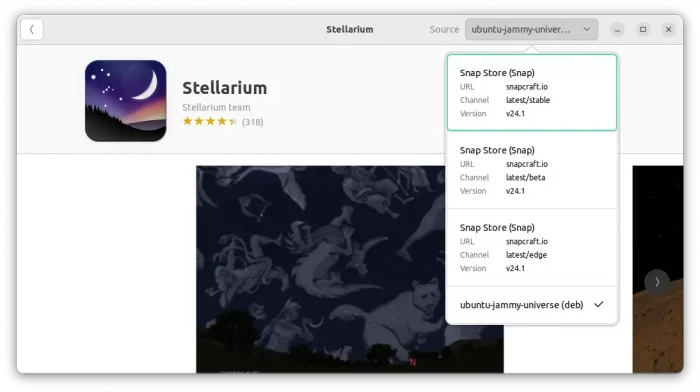Stellarium, the free planetarium app, release version 24.1 a day ago.
Stellarium is a free open-source desktop app for Linux, Windows, and MacOS. It shows a realistic sky in 3D, just like what you see with the naked eye, binoculars or a telescope.
The software released version 24.1 this Tuesday that features low-graphics mode support, which can be useful for users running into low FPS, freezing, or lagging issues. User can enable this feature either by passing --low-graphics or -L option when starting it from command line, or by adding the option in the corresponding .desktop file for Linux.
Other changes in Stellarium 24.1 include:
- Fix missing stars when compared to the DSS colored display.
- Ability to following the current position in Search Tool/Position
- Ability to set a sub-arcminute lower limit for angular size
- Add note on Ephemeris table
- Add special case for SIMBAD/NCP in Search Tool
- Add ability to toggle visibility HIPS surveys via scripting engine
- Add ability to use comma as decimal separator in Remote Control plugin
- Lithuanian translation
- Add distance and heliocentric distance info for Solar system objects into scripting engine
- Add major axis, minor axis and orientation angle info for DSO into scripting engine and Remote Control plugin
- Add code to automatic updating the TLE sources from Celestrack website
- Add a tabular view for distances of Solar system objects
How to Install Stellarium 24.1
Stellarium provides the official packages for all supported platforms via the links in the header of its website.
For Ubuntu, users can easily install the Snap package from Ubuntu Software or App Center.
There’s also an official PPA contains the packages for Ubuntu 24.04, Ubuntu 23.10, and Ubuntu 22.04. To add the PPA, and install .deb package from it, open terminal (Ctrl+Alt+T) and run commands below one by one:
sudo add-apt-repository ppa:stellarium/stellarium-releases
sudo apt update
sudo apt install stellarium
For choice, there’s also non-install AppImage (see the website link above), and Flatpak package runs in sandbox and works in most Linux.

















